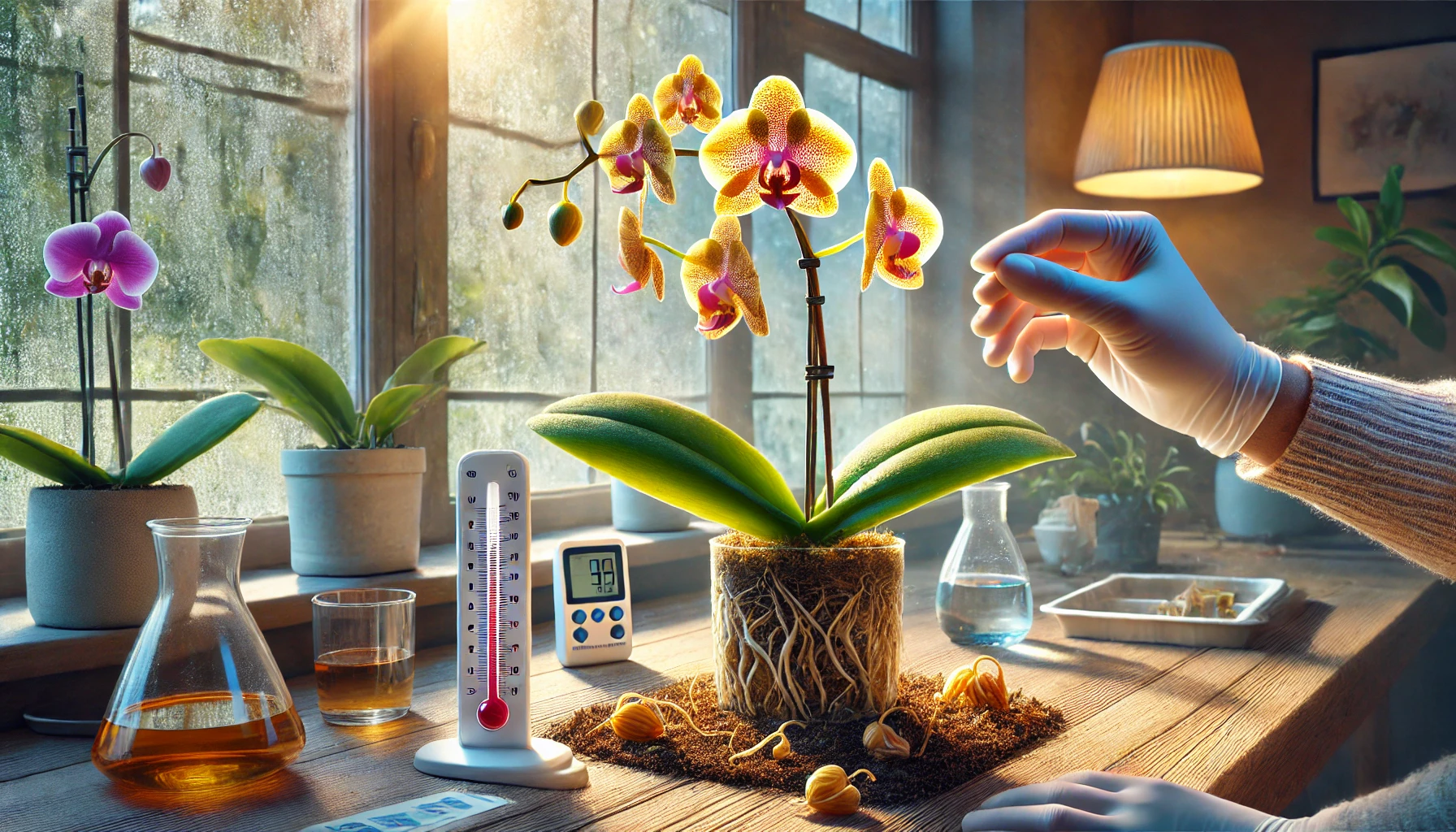Bud blast is one of the most frustrating problems for orchid growers. Just when you’re expecting beautiful flowers, the buds turn yellow, dry out, and fall off before opening. This issue can be caused by several environmental factors, including sudden temperature changes, improper watering, and even exposure to ripening fruit. Understanding the causes of bud blast and how to prevent it will help ensure your orchid blooms beautifully.
🌸 What Is Bud Blast?
Bud blast happens when an orchid’s flower buds develop normally but fail to open and instead dry up and fall off. This is different from natural flower aging, as bud blast occurs before the flowers even have a chance to bloom.
❌ Signs of Bud Blast:
- Flower buds turn yellow or brown before opening.
- Buds become shriveled or dry and drop off the spike.
- The orchid looks otherwise healthy, with no signs of root or leaf problems.
💡 The good news? Bud blast is not a disease but rather a reaction to environmental stress. By identifying the cause, you can prevent it from happening again.
🌡 Causes of Bud Blast and How to Prevent It
Bud blast can be triggered by sudden changes in the orchid’s environment. Even a small shift in temperature, humidity, or watering habits can stress the plant and cause buds to drop.
🔥 Sudden Temperature Changes
✔ Keep your orchid in a stable temperature range of 65–75°F (18–24°C).
✔ Avoid placing it near heaters, air conditioners, or open windows.
✔ If outdoor temperatures drop suddenly, move your orchid to a warmer spot indoors.
💧 Overwatering or Underwatering
✔ Water your orchid only when the roots turn silvery-white to prevent root stress.
✔ Use room-temperature water and allow excess moisture to drain completely.
✔ Never let your orchid sit in standing water, as soggy roots can cause stress and bud loss.
🌬 Low Humidity Levels
✔ Orchids thrive in 50–70% humidity. If the air is too dry, buds can shrivel and drop.
✔ Use a humidity tray (a shallow tray filled with water and pebbles) to maintain moisture.
✔ If your home is very dry, consider using a room humidifier near your orchid.
💨 Drafts and Strong Airflow
✔ Keep orchids away from ceiling fans, vents, and open windows that create strong air currents.
✔ If using a fan, set it to low speed and indirect airflow to prevent drying out the buds.
🍏 Exposure to Ethylene Gas (From Ripening Fruit)
✔ Keep orchids away from fruit bowls, as ripening fruit releases ethylene gas, which speeds up bud drop.
✔ If you store fruit in your kitchen, move the orchid to a different room.
🌞 Too Much or Too Little Light
✔ Place your orchid in bright, indirect light to support healthy blooms.
✔ Use a sheer curtain to filter strong sunlight from south-facing windows.
✔ If natural light is insufficient, use a full-spectrum grow light for at least 10–12 hours a day.
✂️ Improper Handling or Movement
✔ Avoid moving your orchid too frequently, especially when it’s forming buds.
✔ If you must move it, do so gently and keep light exposure consistent in its new location.
🛠 How to Save an Orchid Experiencing Bud Blast
If you notice your orchid’s buds turning yellow or drying up, act quickly to correct the issue.
✔ Check for environmental stressors – Identify any sudden changes in temperature, humidity, or watering habits and correct them.
✔ Increase humidity – If buds are shriveling, place the orchid on a humidity tray or mist the air around the plant.
✔ Improve watering routine – Water only when needed and ensure proper drainage to avoid root stress.
✔ Keep temperatures stable – Avoid moving the orchid to a colder or hotter spot suddenly.
❌ If a bud has already turned completely brown and shriveled, it will not recover. However, preventing further stress can save any remaining buds from blasting.
🌿 How to Encourage Future Blooms After Bud Blast
Even if bud blast occurs, your orchid can still bloom again with proper care. Once the plant stabilizes, it will try to grow new buds.
✔ Trim the flower spike carefully – If the spike is still green, leave it intact and continue care. If it turns brown and dry, trim it at the base.
✔ Maintain a stable environment – Keep temperature, light, and humidity consistent to encourage new flower spikes.
✔ Use a bloom-boosting fertilizer (10-30-20) to support flower production.
✔ Monitor new growth – Once new leaves or roots appear, your orchid is recovering and may rebloom soon.
🛡 Final Tips to Prevent Bud Blast in Orchids
✔ Keep your orchid in a stable location with consistent lighting and temperature.
✔ Maintain 50–70% humidity and use a tray or humidifier if necessary.
✔ Water properly—avoid overwatering and let the roots dry slightly between waterings.
✔ Keep orchids away from ripening fruit to prevent exposure to ethylene gas.
✔ Be patient—if your orchid loses its buds, proper care will help it bloom again in the future!
With the right conditions, your orchid will thrive and produce long-lasting, beautiful flowers without the risk of bud blast. 🌸✨
